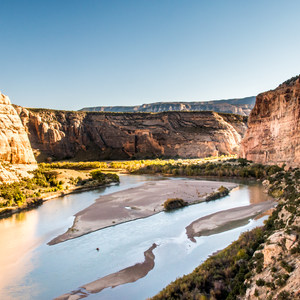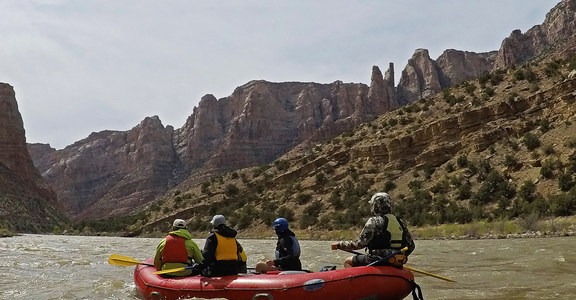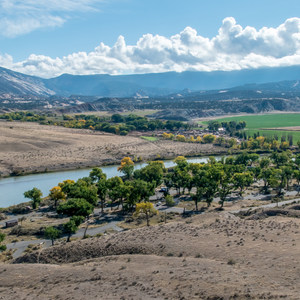Established in 1915 by President Woodrow Wilson to protect a very rich, but geographically tiny, dinosaur dig in the northeast corner of Utah, Dinosaur National Monument was greatly enlarged in 1938 to include over 200,000 acres of high desert wilderness, wild rivers and Native American archeological sites spanning Utah and Colorado. The park is so much more than dinosaurs, though the monument's name may indicate otherwise. Add to that the reality of the park’s remote location, which may discourage visitors who would really appreciate the outstanding preserve this monument encompasses.
Also not widely known, this park played a pivotal role in the great environmental battles of the 1970s, when David Brower, then head of the Sierra Club, led the effort to preserve the last of the West’s great wild river canyons from the dam builders. The Grand Canyon, Glen Canyon and Green River Canyon in Dinosaur National Monument were all threatened. In a last desperate effort to save something, Brower bargained away Glen Canyon (now Lake Powell) to save Echo Park, at the heart of today’s Dinosaur National Monument. Visiting Echo Park today is a bit of a pilgrimage to a remote temple of the environmental movement.
Dinosaur has something to offer many types of visitors. Some will see the park mostly from the Green River as it crosses from north to south on a multi-day float trip. Intrepid backpackers and those willing to drive on primitive and extremely remote roads will find vast areas of solitude and stark beauty. Car campers and day visitors have great options for camping, hiking and, yes, exploring dinosaur bones! Many highlights of the park are located on the main park road on the Utah (western) side of the park.
There are six developed campgrounds in the park and several backcountry camping spots. The largest campground in the park is Green River Campground. It has flush toilets and few other amenities, but it is nicely laid out and convenient to many of the parks features. There is one group campground that is reservable, and the rest are small tent-only campgrounds serving river runners or tiny backcountry campsites.
Some of the most rewarding hiking trails in the park are not long and most are very lightly-traveled:
- Jones Hole (4-1/2 miles)
- Desert Voices Trail (1-1/2 miles)
- Sound of Silence Trail (3 miles)
- Harpers Corner Trail (1-1/2 miles)
- River Trail (2 miles)
Because of the size of the park and the scarcity of roads, it is sometimes a long drive from the park entrances to some of the most spectacular places, like Echo Park and Island Park, but the scenery is spectacular and there are often other treasures to be found along the way, like petroglyphs.
The namesake dinosaur quarry is pretty special, too, and it is a must-explore for kids from 4 to 94. It is located near the visitor center on the Utah side of the park. The way the excavation is displayed on a huge wall is very innovative and engaging. There are also nice short hikes around the grounds of the quarry.
Logistics + Planning
Current Weather: Powered by Dark Sky







Preferable season(s)
Congestion
Parking Pass
Pros
Cons
Features
Uintah County is a hidden gem of adventure and discovery just three hours east of Salt Lake City, Utah. Home to three state parks, world-class river rafting and one of the most productive dinosaur quarries in the world, Uintah County has something for everyone. Visit dinoland.com for more information.


















Comments
Sign In and share them.